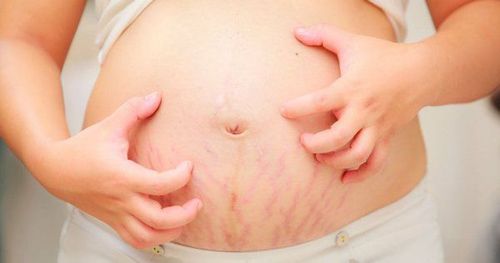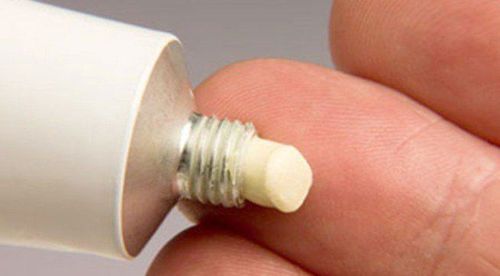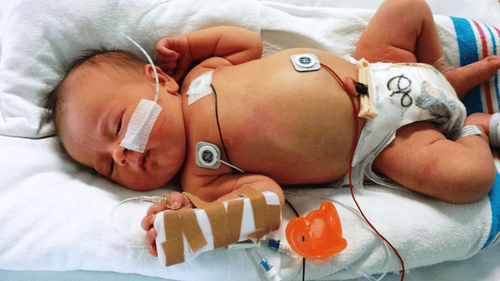This is an automatically translated article.
Late neonatal sepsis is an infection occurring after the 5th day of life. The main clinical forms are meningitis, sepsis, local infections (UTIs, skin, mucous membranes, osteoarthritis, necrotizing enterocolitis).1. Why do children get infections?
Children can be infected through the following ways:1.1 Through blood from mother to child Is transmission occurs before birth, common agents such as: Congenital syphilis, HIV, cytomegalo virus, rubella, toxoplasma.
1.2 Transmission through the amniotic route Due to urogenital infection in the mother, the mother has cervical cleft, many vaginal examinations, premature rupture of membranes.
Transmission by contact at birth: through the uterus, vulva, vagina during prolonged labor.
1.3 Due to the environment Indirectly transmitted through items such as needles, syringes, catheters, gastric catheters, do not wash hands when in contact with other patients. Contaminated environment. Increased risk of long hospital stay, asphyxia, delivery room resuscitation, prematurity, low birth weight.

Trẻ có thể bị nhiễm trùng do lây qua đường ối
2. Clinical symptoms of late neonatal sepsis
2.1 Sepsis Symptoms are similar to early neonatal sepsis. Including death rash, subcutaneous hematoma, hemorrhage in many places, hepatosplenomegaly.2.2 Meningitis Persistent fever or unstable body temperature. Altered consciousness, altered muscle tone, convulsions, excitability, apnea, crying, fontanelle. Meningeal symptoms may or may not be present. Irregular breathing, vasomotor disturbances, vomiting. 2.3 Skin infections Small and irregular blisters, initially containing clear fluid, if superinfected, there is turbid pus, broken, leaving a red background, clear fluid spreads around the new acne. Exfoliative dermatitis (Ritter's disease): initially as pustules around the mouth, later spreading to the whole body, the epidermis is cracked and broken, leaving red, blood-soaked blisters. Body as a whole: infection, intoxication, high fever, dehydration. May be accompanied by: pneumonia, diarrhea, blood infection. 2.4 Umbilical cord infection The umbilicus often falls off early, red, swollen, bruised, pus or blood, bad smell, swelling around. The navel often falls off late, is wet, has a bad smell, and is swollen all over the body. Possible: fever, loss of appetite, abdominal distension, digestive disorders. 2.5 Urinary tract infections Often there is jaundice. Urine culture contains bacteria.
2.6 Necrotizing enterocolitis Hematuria. Symptoms of intestinal obstruction, possibly with abdominal wall reaction.
2.7 Mucosal infection Conjunctivitis: children close their eyes, eyelid redness, discharge or discharge of pus.
3. How to prevent neonatal infection?
3.1 Measures to be taken before giving birth Mothers are fully vaccinated and antenatal check-ups. Good treatment of urogenital diseases and infections for mothers. Provide adequate micronutrients for mothers, prevent malnutrition for mothers. Take good care of hygiene for pregnant mothers. Good treatment of cases of premature rupture of membranes, premature rupture of membranes. Avoid prolonged labor At birthEnsure a clean birth. Avoiding infections transmitted through tools, caregiver hands, as well as maternal infections must be well treated at birth. Avoid obstetric complications: Asphyxiation, obstetric trauma for mother and child. 3.2 Measures taken after giving birth

Rửa tay trước và sau khi chăm sóc trẻ sơ sinh
Take the child to a medical facility as quickly as possible if the child shows symptoms such as difficulty sucking, pus-filled eyes, pustules, jaundice, red or pus-filled navel, or less than 5 feedings in 24 hours.
As a key area of Vinmec Health system, Pediatrics Department always brings satisfaction to customers and is highly appreciated by industry experts with:
Gathering a team of top doctors and nurses in Pediatrics : consists of leading experts with high professional qualifications (professors, associate professors, doctorates, masters), experienced, worked at major hospitals such as Bach Mai, 108.. Doctors All doctors are well-trained, professional, conscientious, knowledgeable about young psychology. Besides domestic pediatricians, the Department of Pediatrics also has the participation of foreign experts (Japan, Singapore, Australia, USA) who are always pioneers in applying the latest and most effective treatment regimens. . Comprehensive services: In the field of Pediatrics, Vinmec provides a series of continuous medical examination and treatment services from Newborn to Pediatric and Vaccine,... according to international standards to help parents take care of their baby's health from birth to childhood. from birth to adulthood Specialized techniques: Vinmec has successfully deployed many specialized techniques to make the treatment of difficult diseases in Pediatrics more effective: neurosurgery - skull surgery, stem cell transplantation. blood in cancer treatment. Professional care: In addition to understanding children's psychology, Vinmec also pays special attention to the children's play space, helping them to have fun and get used to the hospital's environment, cooperate in treatment, improve the efficiency of medical treatment. To register for examination and treatment with Pediatricians at Vinmec International General Hospital, please click the "Contact Us" button on the website or register online HERE.
Risk of death from infection after birth in the newborn Diagnosing neonatal infection Be careful if the umbilical cord is wet, has a bad smell













